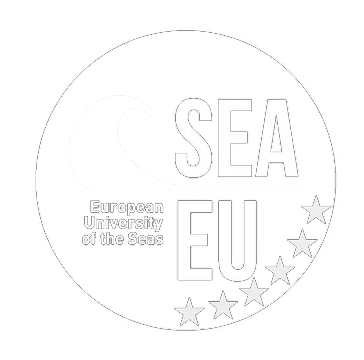Glossary
|
Degree Accreditation |
Process that allows verifying that the syllabus follows the initial project. It is a synthesis instrument of all actions aimed at the improvement of the training offer. It guarantees quality and improvement of information to society about the characteristics of the university offer. |
|
Scientific Aggregations |
Scientific network that unites universities, research centers, companies and institutions with a specific research purpose. |
|
Scope |
It is the framework that integrates the fundamental concepts of the Plan (strategic areas, transversal approach, linked strategies and key elements of the vision). |
|
Strategic Areas |
Ideal space configured by the functions of the university and the resources needed to develop them and achieve the Vision formulated in the II Strategic Plan 2015-2020. There are five spaces or areas: Teaching and Learning / Research and Transfer / Organization and Resources / People / Environment. |
|
Seniors classroom |
Social commitment with the development of academic activities and cultural programs. Its objective is to promote the integration of people over 55 years of age. |
|
Campus of International Excellence |
The Campus of International Excellence Program is part of the 2015 University Strategy to modernize the Spanish University. It aims to promote strategic aggregations between universities and other institutions located on campuses, in order to stimulate employment, social cohesion and territorial economic development. |
|
Technical Commission |
Work team in charge of supporting the Committee of the Strategic Plan, the Working Groups and the Focal Groups. During the deployment of the Plan, they provide technical support to it. It has been formed by 15 people specialized in management of quality. |
|
Strategic Plan Committee |
Working team responsible for approving, defining, identifying, naming, reviewing and validating the elements of the II Plan Strategic. It has been formed by 37 members, with representation of all the estates, branches of knowledge, campuses and with the participation of social agents |
|
Scorecard |
Management tool that provides information about the level of compliance with the strategic objectives. It is measured through relevant indicators. |
|
DAFO |
DAFO is the Spanish acronym of Weaknesses, Threats, Strengths and Opportunities. The SWOT Analysis is a simple tool, used in making strategic decisions. It is based on the analysis of the inside of the organization and its environment. It helps an organization to support organizational changes: consolidating strengths, minimizing weaknesses, taking advantage of the opportunities and reducing threats. |
|
Key Elements of the Vision |
Aspects of the Vision in which to focus to progress: “Efficiency”, “Collaboration”, “Results” and “Recognition”. These concepts were determined from the analysis of the matrix that relates the Elements of the Vision with the Strategic Objectives. |
|
Teaching Assignment |
Distribution of the set of teaching activities and groups, which are under the responsibility of a Department, among the professors of the areas integrated in it. |
|
Transverse Approaches |
Dimensions that complement the strategic areas, such as internationalization, continuous improvement or university social responsibility. They form principles and ways of working for each defined area. |
|
Dual Teaching |
Teaching-learning process agreed between a company and a higher education institution to form a student integrally. |
|
Linked strategies |
Projects or structured guidelines linked with the 2nd PEUCA, which are contemplated to deploying its strategic objectives. There are two: Campus of International Excellence, in which the institution participates (cei • mar & cei • A3), and the strategy “HORIZONTE 2020” |
|
Success Critical Factors |
Limited number of areas, deducted from the diagnosis of the institution, in which obtaining satisfactory results will ensure competitive performance of the organization. |
|
Workgroup |
Working team of the 2nd PEUCA in charge of proposing to the Elaboration Committee the action guidelines that allow to reach the strategic objectives settled. Five working groups have been constituted, composed by members of all the collectives of the university community, in addition to external agents. |
|
Focus group |
Technique based on the open and structured group interview, where a group of individuals discuss and elaborate on a theme, from personal experience. They suppose a collective representation of what happens at the macrosocial level. |
|
Nominal Group |
Technique that allows structuring information in a fast way, in a context in which ideas are generated in a stress-free environment. It allows a more heterogeneous composition of the group than with the focus group technique. |
|
Interest groups |
Set of stakeholders affected by an organization activity. They can be groups of people or entities that respond to common needs. |
|
Indicator |
Magnitude used to measure or compare the obtained results in the execution of a project, program or activity. |
|
Teaching Innovation |
Improvement process of the different aspects related to the teaching / learning process in the university field. Their reference are the lines marked by the European Convergence process. |
|
Lines of action |
Projects that include a set of actions needed to achieve the major challenges or strategic objectives of the institution. Therefore, they are the precise application of short / medium term actions that will achieve these objectives. |
|
Mission and Vision |
Agreed description made collectively about what is currently the University (Mission) and what it want to be (Vision). That is, where we are now and where we want to be in the future. |
|
Strategic Objectives |
They express the Institution medium and long-term goals. They describe what we should do to move towards the Vision. They arise from the SWOT matrix. |
|
Strategic plan |
Document that includes the strategy of the University. It establishes how and where the institution is directed during the period of validity settled down. |
|
PEUCA platform |
It is an IT platform designed by the Planning Unit of the UCA. It allows the participation and the management of the opinions of the Committee members in the different stages of the planning process. It allows, as well, the organization of a large amount of information in a visual way. |
|
Main Actions |
Performances that will allow the development of the actions guidelines. They are originated in the Working Groups, the Focal Groups and the Committee of the 2nd Strategic Plan. Likewise, they may be completed in the period of suggestions and during the deployment of 2nd PEUCA. |
|
Seasonal programs |
They are university training activities that, in alliance with city councils of the province, are developed in the different seasons of the year. Their aim is to disseminating research and teaching activity of the University of Cádiz in non-academic environments. |
|
Branches of Knowledge |
They are large fields of knowledge identified by a set of subjects. These are the essence of each branch: Arts and Humanities, Sciences, Social & Legal Sciences, Sciences of the Health and Engineering & Architecture. |
|
Six years period |
Research activity evaluation of the university professors and staff of the scientific scales of the CSIC. It is carried out by the National Commission Evaluating the Researching Activity (CNEAI). |
|
Efficiency Rate |
Percentage ratio between the total number of credits to which the graduates should have enrolled throughout of their studies on a certain academic year and the total number of credits in which they actually enrolled. |
|
Official Degrees |
Document accrediting the official studies conclusion. It is valid throughout the national territory. |
|
Own Certificates |
Postgraduate programs with the purpose of acquisition of specific & multidisciplinary formation. They are oriented to academic or professional specialization. |
|
Values |
Principles, beliefs and ways of acting that should regulate the behavior of the University and the relationships among people. |


